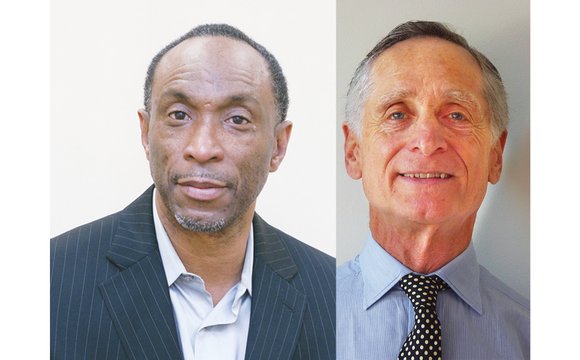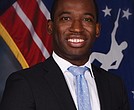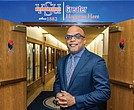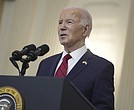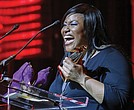Bus Rapid Transit
Can Richmond afford to maintain proposed expensive bus service?
Jeremy M. Lazarus | 1/22/2016, 4:33 a.m.
Can Richmond afford to operate the proposed Bus Rapid Transit system that promises speedier travel and is described as the biggest revamp in public bus service in the city in at least 50 years?
That question now hovers over Richmond City Council, whose nine members are scheduled to decide Monday, Jan. 25, whether to give GRTC the green light to move the $49 million project from the drawing board to construction reality.
While the council earlier endorsed the project and set the planning for it in motion, no one is certain — given the cost — whether at least five council members are prepared to push the project forward at a time when the city is strapped for money to overhaul crumbling schools and deal with other pressing infrastructure and service needs.
Building BRT is not the problem. The money is in hand to develop the system’s 14 stations, to overhaul traffic lights and to buy buses. That includes $41 million in federal and state grants, plus the city’s share of $7.6 million and $400,000 Henrico County is to contribute.
What is not in hand — and may not be — is the money Richmond would need to keep the planned system running 18 hours a day on a 7.6-mile route between Rocketts Landing and the Shops at Willow Lawn. An estimated 3,500 people a day are expected to use the service, many of whom ride the Broad Street Route 6 bus.
As the BRT will run mostly through the city, largely on Broad Street and Main Street with a new BRT bus starting every 10 to 15 minutes, Richmond will be on the hook to make up any costs that fares and other subsidies do not cover.
So far, GRTC has not produced a projected operating budget for BRT or disclosed the potential amount Richmond might have to spend each year to prevent deficits. Transit officials said this week that the first estimate should be ready for council by Monday.
However, the RVA Coalition for Smart Transit, an alliance of 10 civic groups and the Richmond Branch NAACP, has suggested that Richmond should plan to spend between $2.5 million to $5 million extra a year on BRT — sopping up desperately needed money for education, public safety, parks, street paving and other city needs.
The city already is struggling to keep GRTC buses rolling. This year and next year, the council has approved keeping GRTC service going with a $12.9 million subsidy — nearly 25 percent of the transit company’s budget — amid complaints about minimal service on evenings and weekends. But more money will be needed in the next five years to keep GRTC’s 23 regular routes and 11 express lines operating at existing levels, even before BRT is taken into account.
A hint of the fresh costs that Richmond taxpayers might have to absorb came Tuesday when GRTC met with East End community leaders at the Neighborhood Resource Center in Fulton to show off plans for improvements to service in the East End.
Every day, according to a GRTC study, more than 5,000 riders from Church Hill and Fulton board a bus on one of the seven routes serving that area and then transfer to the existing Broad Street Route 6 to travel to other destinations.
During the meeting, GRTC showed off plans for tweaks to the existing lines and for adding three shuttles to provide East End riders with direct and quick connections to the BRT — connections that City Councilwomen Cynthia I. Newbille, 7th District, and Ellen F. Robertson, 6th District, have demanded if the project is to receive their support.
Garland Williams, GRTC director of planning and scheduling, said Richmond would need to put up $1.2 million to $2.4 million over its current GRTC subsidy in order to put a shuttle system to the BRT in place. That extra subsidy would be needed, he said, even though GRTC plans to save $650,000 with adjustments to the regular bus routes, such as having buses on some routes use the Dr. Martin Luther King Jr. Bridge and Leigh Street to enter and leave Downtown.
Councilwoman Newbille, who considers the shuttle service essential to make BRT work for her East End constituents, acknowledged she might face trouble with her colleagues in gaining that kind of additional funding during spring budget talks.
“That’s why I have asked GRTC and its partners to go back and see what other savings can be found,” she said.
Art Burton, a community organizer and founder and director of the nonprofit Kinfolks Community that seeks to expand opportunity for Mosby Court residents, is skeptical that additional money will be available for the shuttle service.
“If council votes for the BRT without first assuring there is money for the shuttles, they will never happen,” he said. He said East End residents who are dependent on GRTC would need to see firm commitments to provide the shuttle service to blunt NAACP opposition.
To Jonathan Marcus, chairman of the RVA Coalition for Smart Transit, the BRT has too many flaws.
“To build BRT the way it is drawn defies common sense,” he said. Instead of improving public transit, he said BRT could sink it with its demand for new subsidies to operate even though “it will hardly serve many new riders.”
Attracting new riders will prove difficult, he said, because GRTC has made no provision for commuters at either end of the line to park their cars and take the BRT to jobs in Downtown or elsewhere.
“This the only BRT plan in the country that does not provide park-and-ride space,” he said.
A better idea, Mr. Marcus said, would be to increase the number of buses on Broad Street Route 6 and equip them with smart technology to trip traffic lights from red to green to speed up service. The BRT buses will be designed to do. That way, he said, existing stop stops could continue to be used, and there would be no need to buy the planned oversize BRT buses that will remove street parking in Downtown and eastern portions of Main Street and require elaborate stations.
The bottom line, he said, “is GRTC and the city need to go back and design a real service that will meet the needs of the residents who rely on public transit” or who would use GRTC if reliable service exists in their area.

